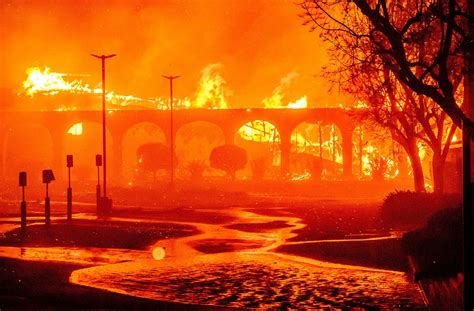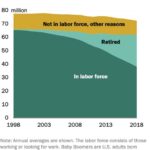
California’s proposed ban on planting most plants in fire-prone areas to mitigate wildfire risk is facing scrutiny, with critics citing potentially crucial oversights that could undermine the plan’s effectiveness and impact homeowners and the environment.
California’s sweeping proposal to restrict the planting of most vegetation within five feet of new homes in wildfire-prone regions is drawing both support and significant criticism, highlighting a complex debate over the best strategies to protect communities from increasingly devastating wildfires. The proposed regulation, aimed at creating defensible space around homes, has raised concerns about its potential impact on landscaping, property values, and the overall ecological health of affected areas. While proponents argue the measure is a necessary step to reduce fire risk, opponents claim it’s overly broad, lacks scientific justification in some areas, and could lead to unintended consequences.
The proposed changes, developed by the California State Fire Marshal and currently undergoing public comment, would prohibit the planting of “most plants” within five feet of new structures in areas designated as having a very high or extreme fire risk. The aim is to create a noncombustible zone immediately adjacent to homes, preventing fires from easily spreading from vegetation to structures. The plan also includes specific recommendations for landscaping within 30 feet of homes, encouraging the use of fire-resistant plants and regular maintenance to reduce fuel loads.
However, the blanket prohibition on most plants within the immediate five-foot zone is raising concerns among horticulturalists, landscape architects, and homeowners. Critics argue that not all plants are equally flammable, and a more nuanced approach that considers plant species, maintenance practices, and microclimates would be more effective and less detrimental to the environment. They point out that some drought-tolerant, low-growing plants can actually help suppress weeds and reduce erosion, while posing a minimal fire risk when properly maintained.
“It’s really important that we don’t take a blanket approach to vegetation management,” said Pamela Beitzell, executive director of the California Native Plant Society. “We need to be thinking about the specific plants that we’re using and how they’re being managed.”
One of the primary concerns revolves around the lack of scientific data to support the claim that all plants within five feet of a home pose a significant fire risk. Critics argue that the rule doesn’t differentiate between highly flammable species, such as certain types of pine trees and junipers, and less flammable options, like succulents or groundcovers. This lack of differentiation could lead to the unnecessary removal of beneficial plants that provide habitat for pollinators, help control erosion, and enhance the aesthetic appeal of properties.
Furthermore, the proposed regulations could have a significant impact on property values. Many homeowners invest considerable time and money in landscaping, and the prospect of being forced to remove established plants or limit future planting options could deter potential buyers. Real estate agents have expressed concerns that the restrictions could make properties in fire-prone areas less desirable, potentially leading to a decline in property values.
Another key area of concern is the potential impact on biodiversity and ecosystem health. The widespread removal of vegetation could disrupt local ecosystems, leading to the loss of habitat for native species and increased erosion. In some areas, native plants play a crucial role in soil stabilization and water conservation, and their removal could have unintended consequences for the overall health of the environment.
Opponents of the plan are advocating for a more flexible and science-based approach to defensible space, one that considers the specific characteristics of the plants, the local climate, and the maintenance practices of homeowners. They suggest that instead of a blanket ban, the regulations should focus on identifying and removing highly flammable species, while allowing homeowners to choose from a list of approved fire-resistant plants. They also emphasize the importance of educating homeowners about proper landscaping techniques, such as regular pruning, watering, and the removal of dead leaves and branches.
The proposed regulations are currently undergoing a period of public comment, and the California State Fire Marshal is expected to consider the feedback before finalizing the rules. It remains to be seen whether the agency will address the concerns raised by critics and adopt a more nuanced approach to vegetation management. The outcome of this debate will have significant implications for homeowners, landscapers, and the environment in fire-prone areas of California.
The debate surrounding California’s wildfire plant ban underscores the challenges of balancing the need for fire safety with the desire to maintain healthy and aesthetically pleasing landscapes. As wildfires become increasingly frequent and severe, it’s crucial to develop effective strategies to protect communities, but these strategies must be based on sound science and consider the potential impact on the environment and property owners. A one-size-fits-all approach may not be the most effective solution, and a more flexible and nuanced approach that takes into account the specific characteristics of different plants and environments may be necessary to achieve the desired outcomes.
The core issue lies in defining what constitutes an acceptable level of risk and how best to mitigate that risk without unduly burdening homeowners or harming the environment. It also raises questions about the role of individual responsibility in wildfire prevention. While regulations can play a role in setting standards and ensuring compliance, ultimately, it’s up to homeowners to take proactive steps to protect their properties from fire. This includes not only choosing the right plants but also maintaining their landscaping properly and being aware of the fire risks in their area.
The long-term implications of the proposed regulations are far-reaching. If implemented as currently written, the ban could significantly alter the landscape of fire-prone areas, potentially leading to a more sterile and less biodiverse environment. It could also create new challenges for homeowners, who may struggle to find suitable plants that comply with the regulations and still meet their aesthetic preferences.
Moreover, the ban could set a precedent for other states facing similar wildfire risks. If California adopts a blanket prohibition on plants, other states may be tempted to follow suit, even if such a policy is not the most appropriate for their specific circumstances. Therefore, it’s essential that California carefully consider the potential consequences of its actions and adopt a policy that is both effective and sustainable.
The discussion also highlights the need for more research on the flammability of different plant species. While some plants are known to be highly flammable, others are relatively fire-resistant, and more research is needed to identify and promote the use of these species in fire-prone areas. This research should take into account not only the inherent flammability of the plants but also their growth habits, water requirements, and ability to tolerate drought and heat.
Furthermore, there is a need for better education and outreach to homeowners about wildfire prevention. Many homeowners are simply unaware of the risks associated with certain types of landscaping, and they may not know how to properly maintain their properties to reduce the risk of fire. Educational programs can help homeowners understand the importance of defensible space and provide them with the tools and knowledge they need to protect their homes from wildfires.
In conclusion, California’s proposed wildfire plant ban is a complex issue with no easy solutions. While the goal of protecting communities from wildfires is laudable, the proposed regulations may be overly broad and could have unintended consequences. A more nuanced and science-based approach that considers the specific characteristics of different plants and environments may be necessary to achieve the desired outcomes. It is imperative to balance fire safety with environmental concerns and homeowner rights to create a sustainable and effective wildfire prevention strategy.
The plan sparks a debate that cuts to the heart of how we balance environmental stewardship with the increasing threat of climate-driven disasters. Finding that balance will require careful consideration, scientific rigor, and a willingness to adapt as we learn more about the complex interplay between vegetation, fire, and the built environment. It’s a conversation that extends beyond California, offering lessons for communities across the globe grappling with similar challenges.
The current draft of the proposed regulation specifies areas designated as “Very High Fire Hazard Severity Zones” by the California Department of Forestry and Fire Protection (CAL FIRE) as the primary targets. These zones are determined based on factors such as vegetation type, slope, weather patterns, and historical fire data. Within these zones, the five-foot ban would apply to all new construction and substantial remodels requiring permits.
Enforcement of the regulation would likely fall to local building departments and fire marshals, who would be responsible for inspecting properties to ensure compliance. The penalties for violating the ban are not yet clearly defined but could include fines, stop-work orders, or even the denial of occupancy permits. The effectiveness of the enforcement will depend on the resources and commitment of local authorities.
The public comment period provides an opportunity for stakeholders to voice their concerns and suggestions, and the California State Fire Marshal is expected to review and consider this feedback before finalizing the regulations. This process is crucial to ensuring that the final rules are both effective and fair.
Moreover, the proposed ban highlights the growing need for comprehensive wildfire mitigation strategies that go beyond defensible space. These strategies should include improved building codes, better land-use planning, and increased investment in fire suppression resources. Building codes can be updated to require the use of fire-resistant materials in new construction, while land-use planning can discourage development in the most fire-prone areas.
Ultimately, addressing the wildfire crisis in California will require a multifaceted approach that involves government agencies, homeowners, and the private sector. By working together, these stakeholders can develop and implement strategies that protect communities from wildfires while also preserving the environment and respecting property rights.
The debate surrounding the plant ban also raises ethical questions about the responsibility of homeowners to protect not only their own properties but also the surrounding community. Wildfires can spread rapidly, and a poorly maintained property can pose a significant risk to neighboring homes and even entire communities. Therefore, homeowners have a moral obligation to take steps to reduce the risk of fire on their properties.
This responsibility extends beyond simply complying with regulations. It also includes being proactive in educating oneself about wildfire prevention and taking steps to reduce the risk of fire, even if those steps are not specifically required by law. This might include clearing brush around the property, maintaining gutters and roofs, and creating a family evacuation plan.
The proposed plant ban is just one piece of a much larger puzzle. Addressing the wildfire crisis in California will require a sustained and coordinated effort by all stakeholders. By working together, we can protect our communities from wildfires and create a more sustainable and resilient future for California.
The potential economic impacts of the ban also warrant careful consideration. While the ban may help to reduce the cost of wildfire damage in the long run, it could also have short-term economic consequences for the landscaping industry and the real estate market. Landscapers may see a decrease in demand for their services, while real estate agents may find it more difficult to sell properties in fire-prone areas.
To mitigate these potential economic impacts, the state could provide financial assistance to landscapers who are affected by the ban. This assistance could take the form of grants, loans, or job training programs. The state could also work with the real estate industry to develop strategies for marketing properties in fire-prone areas and educating potential buyers about wildfire risks.
Furthermore, the state should invest in research and development to identify and promote the use of fire-resistant plants. This research could help to create a new market for these plants, which could benefit the landscaping industry and provide homeowners with more options for creating fire-safe landscapes.
The success of the proposed plant ban will depend on a number of factors, including the specific details of the regulations, the effectiveness of enforcement, and the willingness of homeowners to comply. However, even if the ban is fully implemented, it will not be a silver bullet for solving the wildfire crisis in California. A comprehensive approach that includes improved building codes, better land-use planning, and increased investment in fire suppression resources is essential to protecting communities from wildfires.
Frequently Asked Questions (FAQ):
1. What is the proposed plant ban in California, and where would it apply?
The proposed plant ban would prohibit the planting of most vegetation within five feet of new structures and substantial remodels requiring permits in areas designated as having a very high or extreme fire risk by the California Department of Forestry and Fire Protection (CAL FIRE). These areas are typically known as “Very High Fire Hazard Severity Zones”. The goal is to create a noncombustible zone immediately adjacent to homes, preventing fires from easily spreading from vegetation to structures.
2. Why is the proposed plant ban controversial?
The ban is controversial for several reasons. Critics argue that it’s overly broad and doesn’t differentiate between highly flammable and less flammable plant species. They also express concerns about the potential impact on property values, biodiversity, and ecosystem health. Some argue that a more nuanced approach that considers plant species, maintenance practices, and microclimates would be more effective and less detrimental. The blanket prohibition, according to critics, lacks scientific justification.
3. What are the potential impacts of the plant ban on homeowners and the environment?
For homeowners, the ban could limit landscaping options, potentially decrease property values, and require the removal of existing plants. Environmentally, the widespread removal of vegetation could disrupt local ecosystems, lead to habitat loss for native species, and increase erosion. It could also negatively impact soil stabilization and water conservation efforts in some areas where native plants play a crucial role.
4. What alternatives to a blanket ban on plants are being proposed?
Opponents of the ban advocate for a more flexible and science-based approach, such as focusing on identifying and removing highly flammable species while allowing homeowners to choose from a list of approved fire-resistant plants. They also emphasize the importance of educating homeowners about proper landscaping techniques, such as regular pruning, watering, and the removal of dead leaves and branches. A plant-specific approach is being suggested.
5. What is the current status of the proposed plant ban, and how can the public provide input?
The proposed regulations are currently undergoing a period of public comment. The California State Fire Marshal is expected to review and consider the feedback before finalizing the rules. Members of the public can provide input by submitting comments to the State Fire Marshal through the designated channels, typically available on the agency’s website. The public comment period is a critical opportunity to influence the final form of the regulations.









